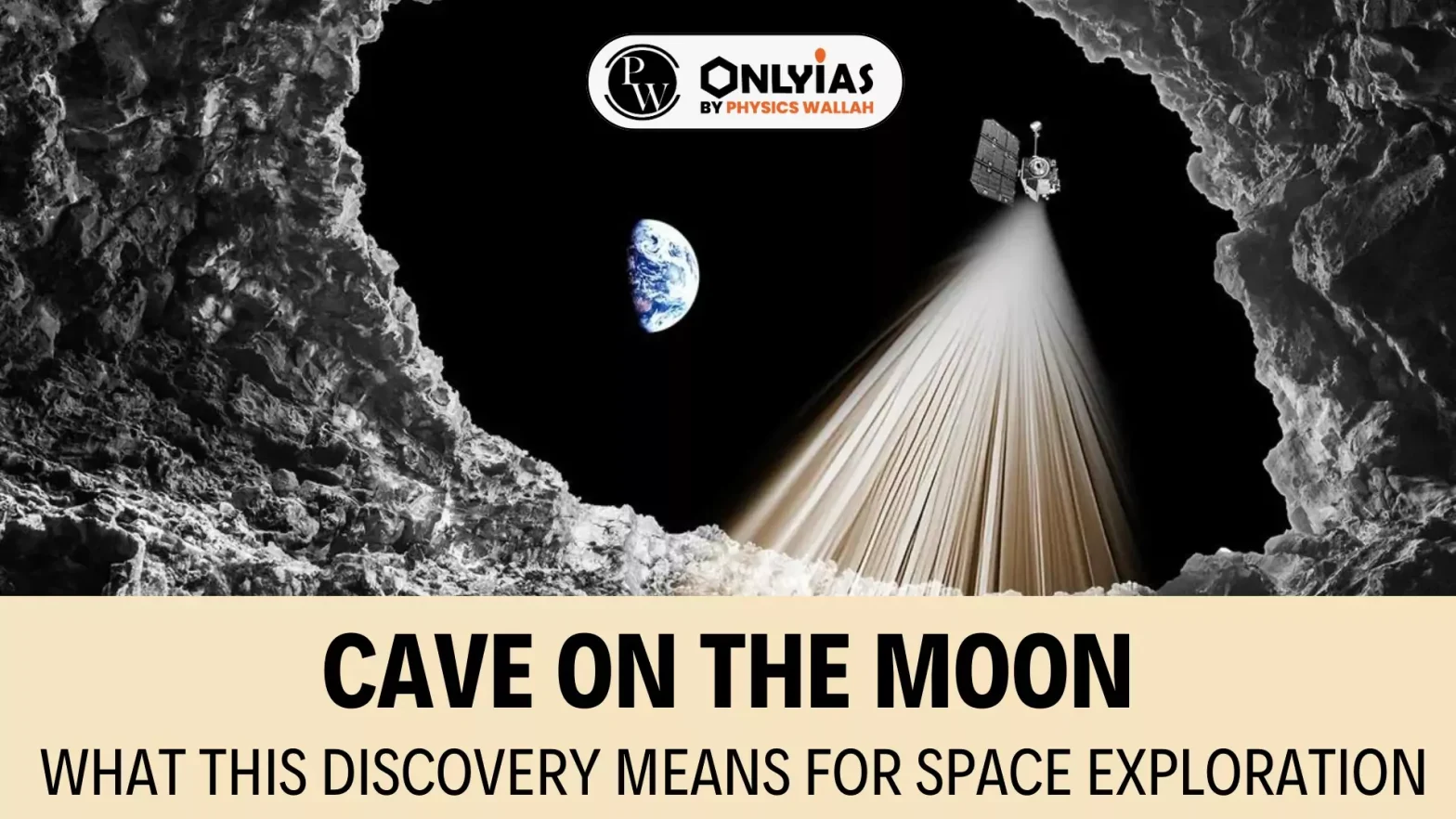The discovery of a cave in the deepest known pit on the moon, not far from where Neil Armstrong and Buzz Aldrin landed, could provide astronauts with a welcoming habitat to make shelters.
| Relevancy for Prelims: Neil Armstrong and Buzz Aldrin, Sea of Tranquillity, NASA’s Lunar Reconnaissance Orbiter (LRO), Lunar Conditions, etc.
Relevancy for Mains: Significance of Lunar Caves, etc. |
Discovery of Lunar Cave
- Location: Sea of Tranquillity, near the site of the first lunar landing.
- Key Details:
- Size: Approximately 45 meters wide and up to 80 meters long.
- Formation: Resulted from the collapse of a lava tube, formed by volcanic activity over a billion years ago.
- Identification: Identified using photos from NASA’s Lunar Reconnaissance Orbiter (LRO) in 2010.
Enroll now for UPSC Online Course
Protecting Humans from Harsh Lunar Conditions
- Lunar Conditions:
- Radiation Exposure: 150 times stronger solar radiation than Earth.
- Temperature Extremes: Daytime heating to 127°C; nighttime cooling to -173°C.
- Stable Temperatures in Caves: Average around 17°C, shielding from extreme lunar surface conditions.
- Protection from Hazards: Shielding from radiation and micrometeorites, enhancing safety for human explorers.
- Significance:
- Future Missions: Could serve as potential habitats for astronauts.
- Exploration: Offers insights into lunar geology and potential resource utilization.
- Scientific Value: Validates decades-old theories about the existence of lunar caves.
- Viability: Caves could serve as future lunar bases or emergency shelters.
- Advantages: Stable temperatures and protection from environmental extremes.
- Challenges:
- Accessibility: Depth of caves poses challenges for human access.
- Risks: Potential for cave-ins and avalanches.
- Structural Stability: Requires further research using ground-penetrating radar, robots, or cameras.
- Research Needs:
- Mapping and Understanding: Detailed mapping of cave properties and structural stability.
- Monitoring Systems: Implementation of systems for seismic activity and cave movement monitoring.
- Safety Measures: Designing safety zones within caves for astronaut protection during emergencies.
Check Out UPSC CSE Books From PW Store
Conclusion
There is a need for ongoing research to enhance understanding and utilization of lunar caves for human habitation.
![]() 19 Jul 2024
19 Jul 2024

